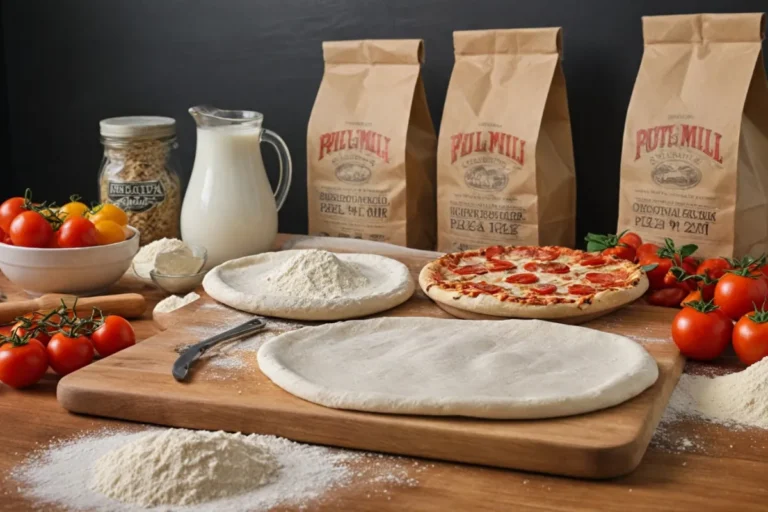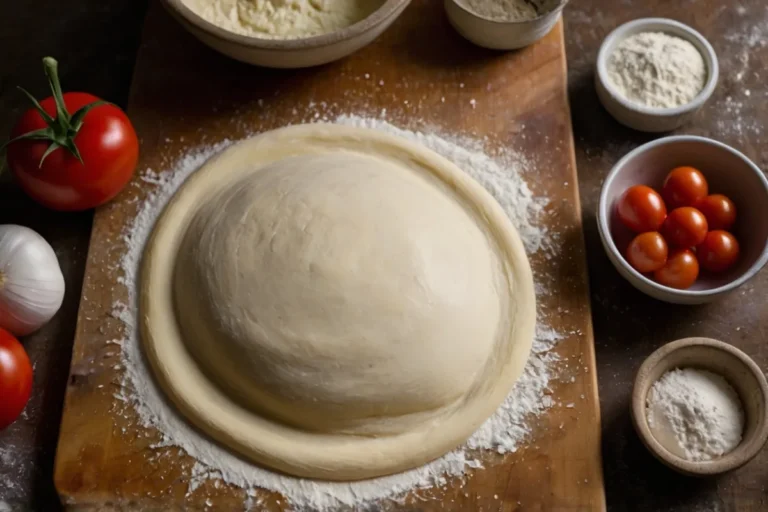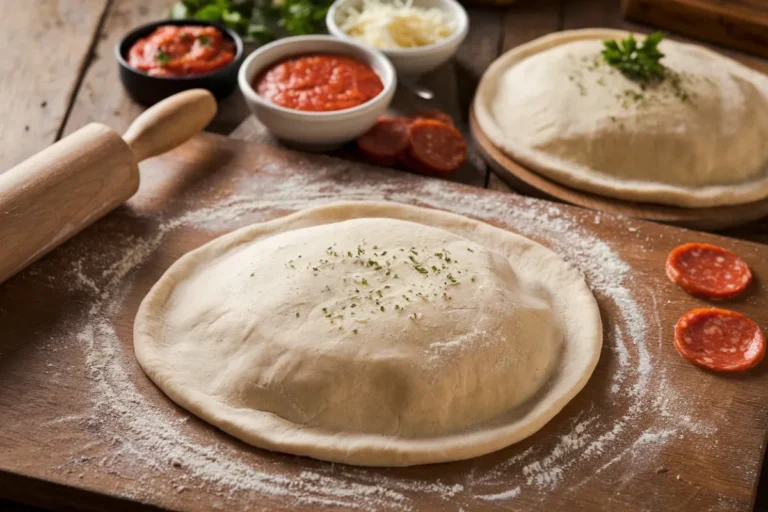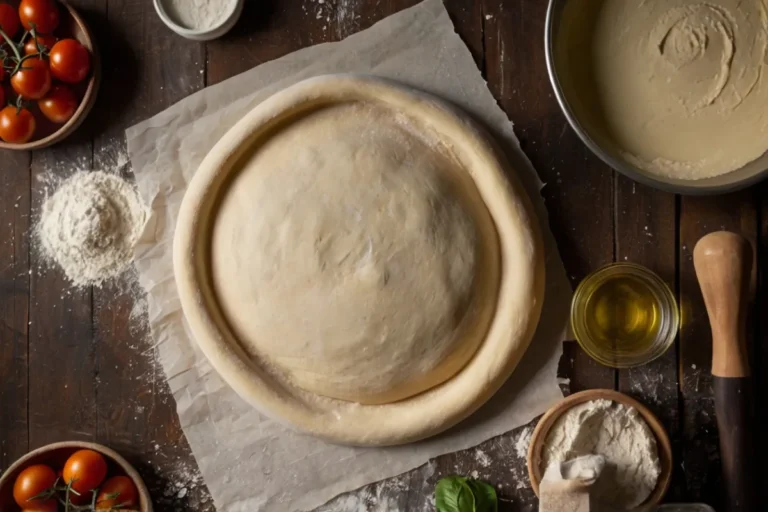Step-by-Step Poolish Pizza Dough Recipe: Achieve a Crispy, Flavorful Crust
Step-by-Step Poolish Pizza Dough Recipe: Achieve a Crispy, Flavorful Crust
When you think of pizza, what comes to mind first? For many, it’s the combination of fresh toppings and melted cheese, but the true star of any great pizza is the dough. The base sets the stage for everything else. If you’ve ever wondered how to create a pizza dough that delivers a perfect, crispy, and flavorful crust every single time, the secret lies in the technique: poolish pizza dough. This method, revered by professional bakers and home cooks alike, gives the dough an amazing depth of flavor, all while improving its texture. In this guide, you’ll learn how to master the poolish pizza dough recipe, from mixing and fermenting to shaping and baking. Get ready to elevate your pizza game.
What is Poolish and Why Does It Work So Well for Pizza Dough?
Before we dive into the recipe itself, it’s important to understand why poolish is such a fantastic choice for pizza dough. If you’re new to the concept, poolish is a type of pre-ferment—a mixture of equal parts flour and water, with a small amount of yeast. It’s left to ferment for several hours or overnight, allowing the dough to develop more flavor and improve its structure.
Why Choose Poolish for Pizza Dough?
- Flavor: The fermentation process allows the yeast to work longer, developing more complex flavors. You’ll get a tangy, slightly nutty flavor in the crust that you just can’t get with traditional quick-rise doughs.
- Texture: Poolish adds strength to the dough while keeping it soft and elastic. The resulting pizza crust is light, with a perfect balance of chewiness and crispiness.
- Ease of Stretching: The longer fermentation process allows the dough to be stretched easily, making it ideal for thin-crust pizzas.
Now that you know what makes poolish so special, let’s gather the ingredients you’ll need.
The Essential Ingredients for Poolish Pizza Dough
A perfect pizza dough begins with the right ingredients. Using quality ingredients is key to achieving that ideal flavor and texture. Here’s a look at the essential ingredients for making poolish pizza dough:
| Ingredient | Amount | Purpose |
|---|---|---|
| All-purpose flour | 500g | The base of the dough, provides structure and chewiness |
| Water | 300ml | Hydrates the flour and supports gluten development |
| Yeast (Active Dry) | 5g | Powers the fermentation process, enhancing flavor |
| Salt | 10g | Regulates yeast activity, boosts flavor |
| Olive Oil | 20g | Improves texture and adds a hint of richness |
Once you’ve gathered your ingredients, it’s time to begin making the poolish.
How to Make the Poolish for Pizza Dough: A Step-by-Step Guide
Creating the poolish is straightforward, but it does require some time and patience. Here’s how you do it:
- Combine Flour and Water: In a medium bowl, mix 250g of all-purpose flour with 250ml of water. The mixture should be smooth and fairly runny—don’t worry if it’s not thick.
- Add the Yeast: Stir in 1g of active dry yeast. It’s essential to use the right amount; too much yeast can overpower the flavor.
- Let It Ferment: Cover the bowl loosely with a cloth or plastic wrap and let the poolish sit at room temperature for 12-16 hours. During this time, it will develop bubbles, and you’ll notice a slightly sour, tangy smell—this is a sign that fermentation is happening and that your poolish is ready.
Pro Tip: You can prepare your poolish the night before you plan to make the dough. The longer it ferments, the more complex the flavor will be.
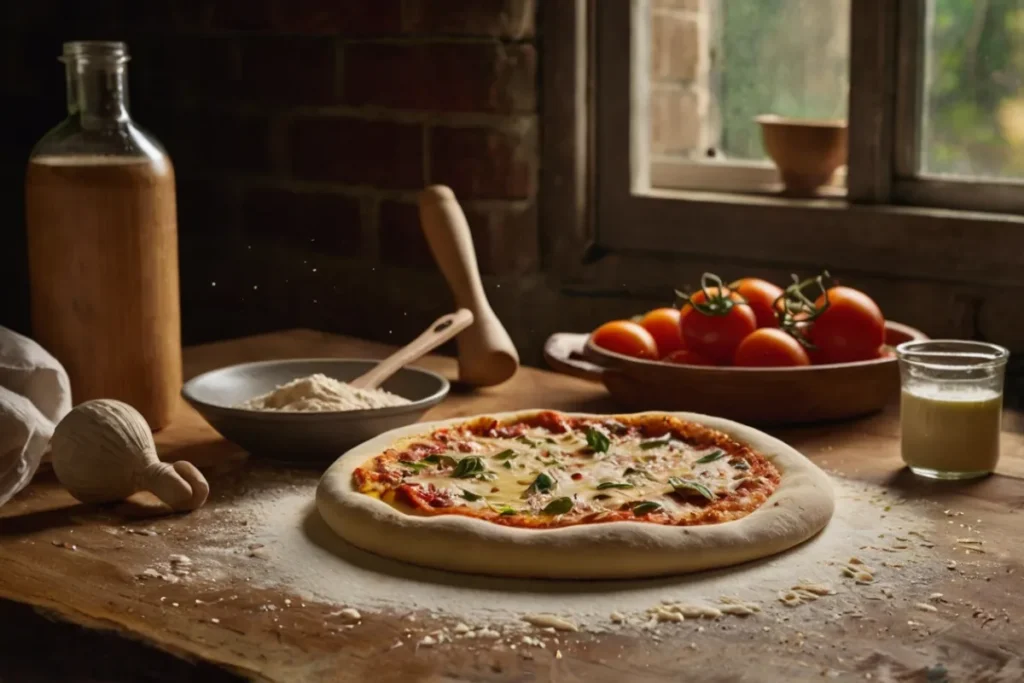
Preparing the Pizza Dough: Mixing the Ingredients
Once your poolish is ready, it’s time to mix the rest of the ingredients to form your dough.
- Add Flour, Salt, and Olive Oil: In a large bowl, combine the poolish with an additional 250g of flour, 50ml of water, 10g of salt, and 20g of olive oil. The oil will give the dough a tender texture.
- Mix Until Combined: Stir the ingredients together until they form a rough dough. It will be sticky at first, but that’s okay.
- Knead the Dough: Turn the dough onto a floured surface and knead for about 10 minutes. The goal is to develop the gluten so the dough becomes smooth, elastic, and slightly tacky but not too sticky.
Pro Tip: If the dough is too sticky, you can add small amounts of flour, but don’t overdo it—adding too much flour will make the dough dense.
The First Rise: Letting the Dough Develop
Once the dough is kneaded, it needs to rise to develop its structure. Here’s how to do it:
- Form the Dough into a Ball: After kneading, shape the dough into a smooth ball.
- Let It Rise: Place the dough in a large, lightly oiled bowl and cover it with a damp cloth or plastic wrap. Leave it at room temperature for about 1 to 2 hours, or until the dough doubles in size.
- Punch Down: After the dough has risen, gently punch it down to release any air bubbles.
Transition: Now that your dough is ready, it’s time to shape it into pizza crusts.
Shaping Your Poolish Pizza Dough
Shaping the dough correctly ensures that your pizza crust is tender and crispy. Follow these steps:
- Divide the Dough: Depending on how large you want your pizzas, divide the dough into 2-4 portions.
- Shape into Balls: Roll each portion into a smooth ball.
- Let It Rest: Allow the dough balls to rest for 30 minutes at room temperature. This rest will make it easier to stretch the dough without it shrinking back.
- Stretch the Dough: Once rested, stretch each dough ball by gently pressing and stretching from the center outward. Avoid using a rolling pin, as it will push out the air bubbles that contribute to a light, airy texture.
Pro Tip: If you prefer a thinner crust, stretch the dough a little more. For a thicker crust, keep it a bit more compact.
The Second Rise: Relaxing the Dough for Easy Stretching
Now that your dough is shaped, it needs one last rise before it’s ready for the oven. This step ensures that the dough relaxes, making it easier to stretch.
- Rest the Dough: Let the dough rest for about 30 minutes on a floured surface before baking.
- Preheat the Oven: Preheat your oven to 450°F (232°C) or higher. A hot oven will help create that crispy crust you’re aiming for.
Transition: While the dough rests, you can prepare your toppings and get ready for baking.
Baking Your Poolish Pizza Dough: The Perfect Temperature and Timing
The right temperature and timing are essential for a great pizza crust. Here’s what you need to know:
- Use a Pizza Stone or Steel: If you have a pizza stone or steel, place it in the oven while it’s preheating. This will help the crust bake more evenly and get a better crisp.
- Bake the Pizza: Place your stretched dough on a floured pizza peel or baking sheet. Add your desired toppings and bake for 10-12 minutes, or until the crust is golden and crisp.
Pro Tip: For an extra crispy crust, you can bake the pizza for 1-2 minutes on the lower rack of the oven.
Troubleshooting Common Pizza Dough Issues
Even with the best recipe, things can occasionally go wrong. Here are some common issues and solutions:
- Dough is Too Sticky: If your dough is too sticky, sprinkle a little more flour during the kneading process. But remember, you want the dough to be slightly tacky.
- Crust is Dense or Flat: This could happen if the dough wasn’t allowed to rise enough or if it was overworked. Make sure you give the dough enough time to rise and relax.
- Dough Shrinks While Shaping: This is usually a sign that the dough wasn’t rested long enough. Make sure to let the dough relax for at least 30 minutes before shaping.
FAQs About the Poolish Pizza Dough Recipe
Q: How long should I let my poolish rise?
A: The poolish should ferment for 12-16 hours at room temperature. The longer it ferments, the better the flavor.
Q: Can I use all-purpose flour for this recipe?
A: Yes, all-purpose flour works perfectly for poolish pizza dough.
Q: How do I store leftover dough?
A: Store any leftover dough in an airtight container in the refrigerator for up to 3 days.
Q: Can I freeze the dough?
A: Yes, you can freeze the dough after the first rise. Just wrap it tightly in plastic wrap and freeze for up to 3 months.
Conclusion: Perfect Your Pizza with Poolish
With the step-by-step poolish pizza dough recipe, you’re equipped to make pizza like a pro. The extra time and effort required to prepare poolish is worth it, as it results in a dough that is rich in flavor and has a beautiful, crispy texture. Whether you’re making a classic Margherita or experimenting with toppings, your homemade pizza will always turn out delicious. So, why not give it a try and enjoy a pizza that’s just as good—if not better—than what you’d get at a pizzeria? Enjoy every bite of your poolish pizza dough, and get ready to impress your friends and family with your newfound pizza-making skills.


